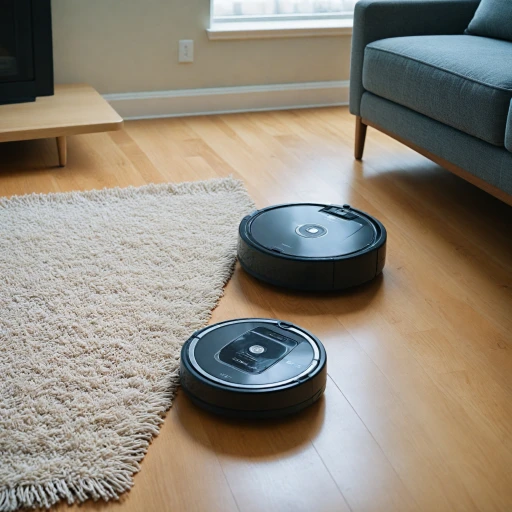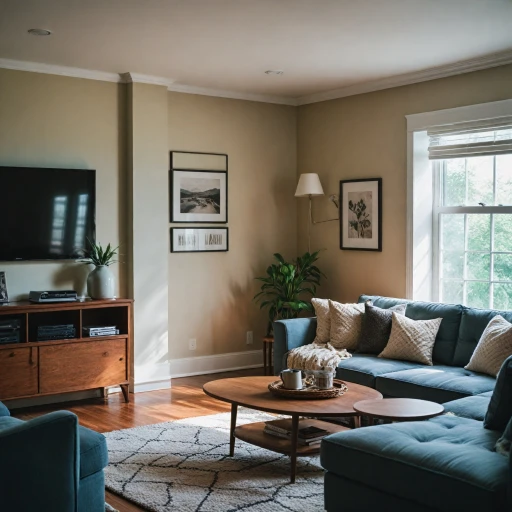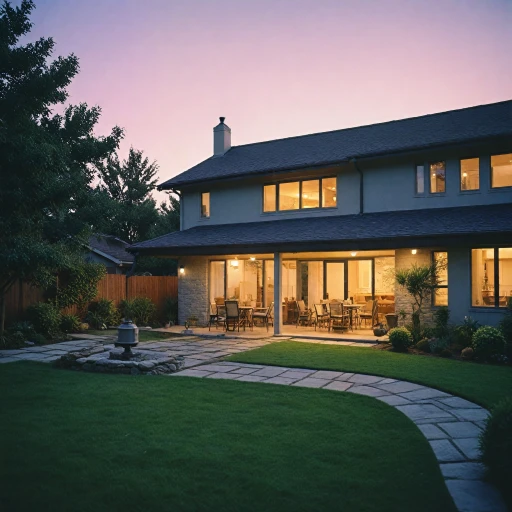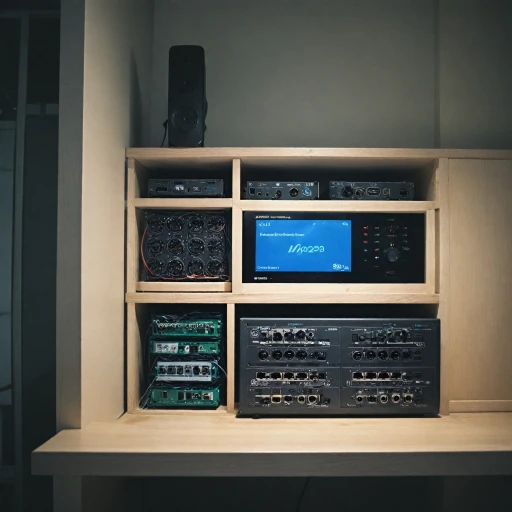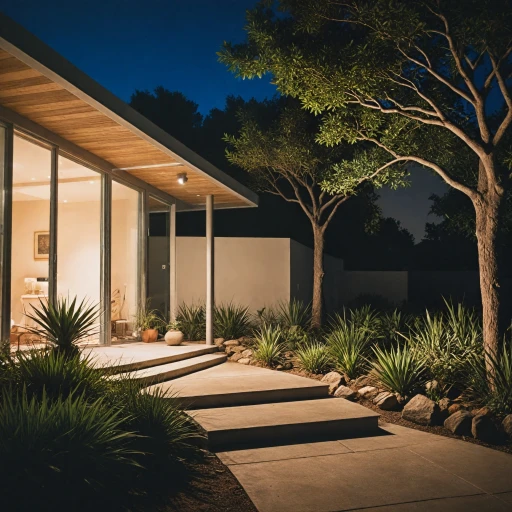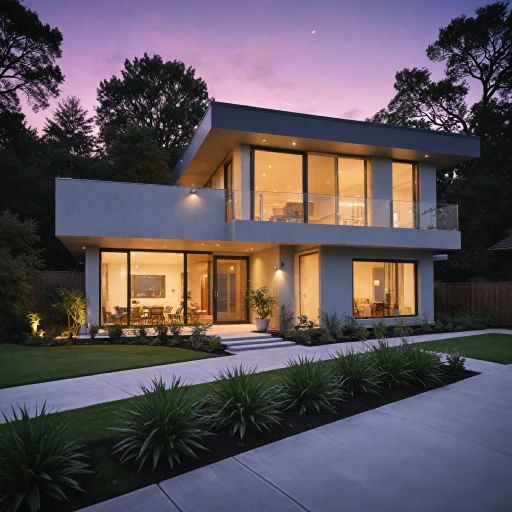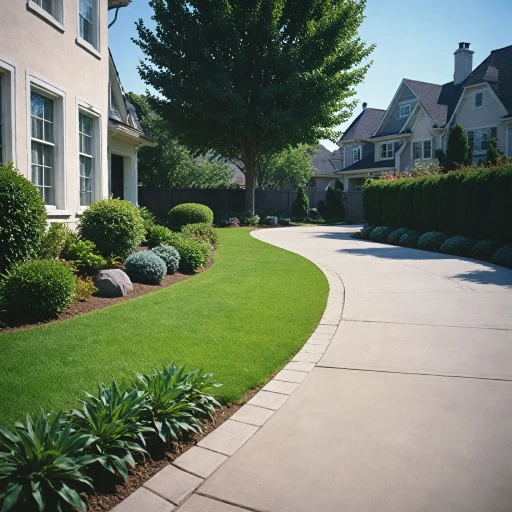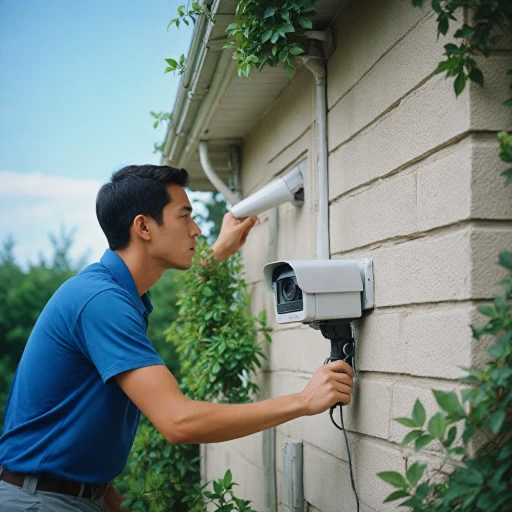
Understanding WiFi PTZ Cameras
Diving into the World of PTZ Cameras
A WiFi PTZ camera is a revolutionary piece of technology in the realm of home security systems. Combining 'Pan, Tilt, and Zoom' functionalities with the convenience of wireless connectivity, these cameras offer homeowners a flexible and efficient solution to safeguard their premises. PTZ cameras are engineered to cover much more ground than traditional fixed cameras, enabling users to actively monitor large areas with agility. The 'Pan' feature allows the camera to move horizontally, delivering an extensive view across wide expanses. 'Tilt' offers vertical movement, making it feasible to survey high or low areas that may otherwise be off-limits. Perhaps most impressively, the 'Zoom' function (often incorporating optical zoom) lets homeowners focus on specific points of interest without sacrificing image quality. These cameras are typically equipped with night vision capabilities, ensuring 24/7 surveillance regardless of lighting conditions. With potential for color night vision, PTZ cameras can capture clear images even in low-light scenarios, further enhancing their effectiveness in security applications. Choosing a WiFi-based system eliminates cumbersome wiring, promoting ease of use and installation. While discussing installation, certain considerations such as proper mounting and placement can significantly dictate performance and functionality.For those interested in sustainable energy options, exploring the benefits of solar-powered PTZ cameras can provide an eco-friendly solution.
Wireless accessibility allows users instant access to live feeds via a dedicated app, providing real-time updates and remote control over the camera's pan tilt and zoom capabilities. This convenience is complemented by features like auto tracking and motion detection that alert users to any unusual activity. Advanced audio capabilities also contribute to a comprehensive surveillance system, ensuring you don't just see, but also hear potential threats. Pricing varies across the market based on functionalities and specifications, from basic units to sophisticated models with additional features like CLS fill or auto detection. Understanding these variables and aligning them with personal security needs is crucial for making an informed decision on investment.Benefits of Using WiFi PTZ Cameras for Home Security
Maximizing Security with PTZ Camera Technology
The advantages of employing WiFi PTZ cameras for boosting home security are numerous. These cameras, renowned for their versatility and superior coverage, offer an undeniable edge when compared to traditional systems. Firstly, the ability to pan, tilt, and zoom is a standout feature. This flexibility allows the camera to cover a wide area and adjust its view dynamically, ensuring comprehensive surveillance. With an optical zoom capability, PTZ cameras can focus on distant objects without losing detail, making them far superior to fixed cameras in monitoring large spaces. Moreover, the integration of motion detection enhances security considerably. This ensures that any movement within the camera's field of view triggers an automatic recording or an alert, thereby enabling immediate action. The auto tracking feature is another significant plus, as it allows the camera to follow a moving object within its view, ensuring continuous monitoring. Another key aspect is the presence of night vision technology. Modern PTZ cameras with color night vision provide clear imagery even in low-light conditions, ensuring that activities are recorded irrespective of the time of day. This is particularly useful for outdoor security needs. The advancements in wireless technology mean that these cameras can connect seamlessly to your home WiFi network, allowing for easy remote access. Using dedicated apps, homeowners can monitor their property from anywhere in the world, ensuring peace of mind when away from home. Notably, PTZ cameras also integrate audio systems, which can either capture sound or allow for two-way communication. This is particularly beneficial when you need to interact with someone at your property directly, like delivering instructions to a visitor. Consideration of unit price versus the features offered is crucial. When setting a budget, explore the regular and special prices of various models, ensuring you get value for your investment. The plethora of options available means that thorough research can lead you to a well-suited model for your specific security needs. Ultimately, adopting a PTZ security camera can significantly upgrade your home security system, providing robust, all-encompassing surveillance that is both flexible and reliable. For more insights on integrating this technology effectively, explore how you can enhance your home protection with strategic camera placement.Installation Tips for WiFi PTZ Cameras
Best Practices for Installing Your WiFi PTZ Camera
Setting up a WiFi PTZ camera requires careful planning to ensure optimal performance and robust home security coverage. With its unique capabilities like pan, tilt, and optical zoom, the PTZ camera allows for comprehensive surveillance. Here are some essential tips to efficiently install your new security camera system:- Selecting the Location: To maximize the efficiency of your PTZ camera, determine a location that provides a wide field of view. Consider the primary areas you want to monitor such as main entrances, driveways, or large outdoor spaces. This ensures that the camera’s pan tilt zoom features are utilized effectively.
- Ensuring Strong WiFi Connection: A reliable wireless connection is crucial for the seamless transmission of video feeds. Ensure your camera is within the range of your WiFi router to avoid connectivity issues. Testing the signal strength before installation can prevent unnecessary disruptions.
- Proper Mounting Techniques: Whether you install your camera on a wall or ceiling, secure mounting will ensure stability. Utilize appropriate fixtures and fittings to withstand various weather conditions when installing a camera outdoor. This will protect the unit price investment in your PTZ security system.
- Adjust for Optimal Coverage: After installation, adjust the camera settings for detection and auto tracking to cover key areas effectively. Use the wireless app associated with your camera to test pan and tilt functions, ensuring that important areas are captured through the entire range of motion.
- Power Source Considerations: Depending on your camera model, ensure it has access to a power source. Wireless options might require regular battery changes, while wired models need a reliable power outlet. Consider surge protection to safeguard against power fluctuations.
Overcoming Common Challenges
Addressing Installation Hurdles
Installing a WiFi PTZ camera can initially seem daunting, but understanding common challenges and their solutions simplifies the process. When securing your home with such advanced technology, awareness and preparation are key.- Connection Issues: One frequent difficulty is establishing a stable WiFi connection, especially if your camera is positioned far from the router. To address this, consider a WiFi extender to boost signal strength, ensuring seamless connectivity for your PTZ camera.
- Optimal Placement: The effectiveness of your security camera largely depends on its positioning. PTZ cameras offer a wide range of motion, including pan, tilt, and optical zoom capabilities. For maximum coverage, choose a vantage point with a clear view of the desired area, avoiding obstructions.
- Power Supply Concerns: Another obstacle can be ensuring a constant power supply. While many PTZ cameras are wireless in terms of data, they may still rely on wired power. Investigating battery-operated models or incorporating solar-powered options could provide more flexibility and sustainability.
- Weather Resistance: When installing an outdoor camera, consider its resistance to weather elements. Security cameras equipped with weatherproof casings prevent damage from rain, dust, and extreme temperatures, ensuring longevity and consistent performance.
- Integration with Existing Systems: If you already have a security setup, integrating a new WiFi PTZ camera with your existing system might be tricky. It's crucial to ensure compatibility or explore integration options that allow for cohesive operation, like apps that consolidate multiple camera feeds.
Privacy Concerns and Solutions
Tackling Privacy Issues
Privacy is a paramount concern when dealing with home security cameras, especially when they are equipped with advanced features like PTZ (pan, tilt, zoom) and WiFi connectivity. These cameras are designed to offer extensive coverage, which can sometimes inadvertently infringe upon the privacy of others, such as neighbors. Therefore, it's crucial to address privacy concerns effectively. Modern PTZ cameras often come with wide-angle lenses and optical zoom capabilities, which enhance their surveillance potential but also demand responsible usage. To ensure compliance with privacy laws and maintain neighborhood harmony, homeowners can adjust camera angles and demarcate boundaries, so the focus remains solely on your property. Using privacy masks offered by some systems can also help avoid capturing unwanted areas. Most smart cameras today use applications that not only provide video and audio feeds but also allow for customized settings. Secure the app with strong passwords and enable two-factor authentication to prevent unauthorized access. Limiting access to video feeds is another way to preserve privacy without sacrificing security. You can also automate alerts for unusual activity through motion detection while respecting the privacy of those around you. A further measure is to stay updated with firmware and system software, as companies frequently release updates to address vulnerabilities. Whether opting for an outdoor or indoor unit, investing in a security camera system with robust data encryption will provide an extra layer of protection. It’s worth considering investing in wifi cameras equipped with features like auto-tracking that enhance security while providing recorded evidence with less chance of oversight. Yet, as you prioritize security, remember to respect the privacy of others in the shared environment you inhabit. In sum, with a nuanced approach that leverages technology responsibly and respects boundaries, homeowners can balance security needs against privacy concerns effectively. Knowing the potential of PTZ cameras and adapting them to your environment will empower you with peace of mind without compromising on privacy.Choosing the Right WiFi PTZ Camera for Your Needs
Identifying the Best Security Camera for Your Property
When choosing a WiFi PTZ camera for your home, consider several factors to ensure it meets your security requirements and fits within your budget. Here's a guide to select the right camera for your unique needs:
- Features and Specifications: Determine essential features such as optical zoom, pan tilt capabilities, and night vision. If monitoring during nighttime is crucial, look for cameras with color night vision capabilities.
- Price Range: Evaluate the unit price, keeping in mind that a special price may be available for some models. Assess how the price aligns with the camera's features to ensure you're getting good value.
- Installation Environment: Consider if you'll place your camera outdoors or indoors. Outdoor cameras need to withstand weather conditions and should have a durable build.
- Motion Detection and Auto Tracking: Examine whether the camera has reliable motion detection and auto tracking features, particularly if you want real-time alerts and updates.
- Video Quality and Field of View: High-definition video quality and a wide field of view are essential for capturing clear images and covering more areas of your property.
- Connectivity and App Support: Ensure that the WiFi camera offers stable wireless connectivity and is compatible with a user-friendly app for easy operation.
- Additional Features: Look for features like audio capabilities, auto tilt zoom, and system integrations that can further enhance security and convenience.
Choosing the right WiFi PTZ camera can significantly enhance your home security system, providing peace of mind with advanced detection and monitoring features. Carefully compare various options to find the most suitable camera for your property needs.


